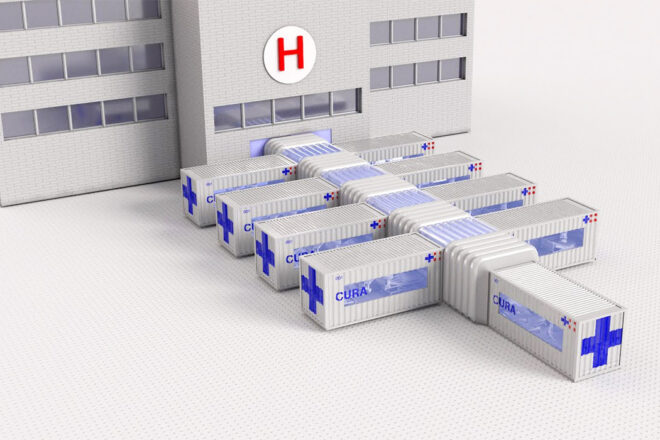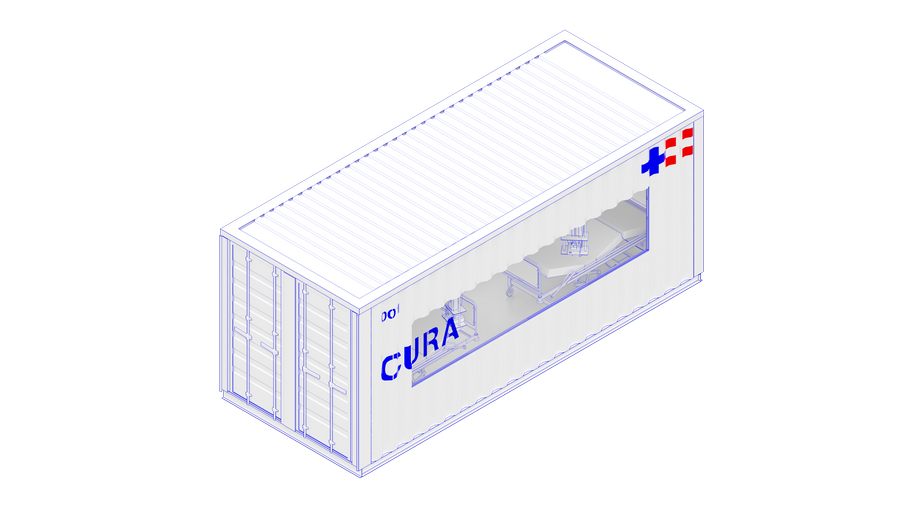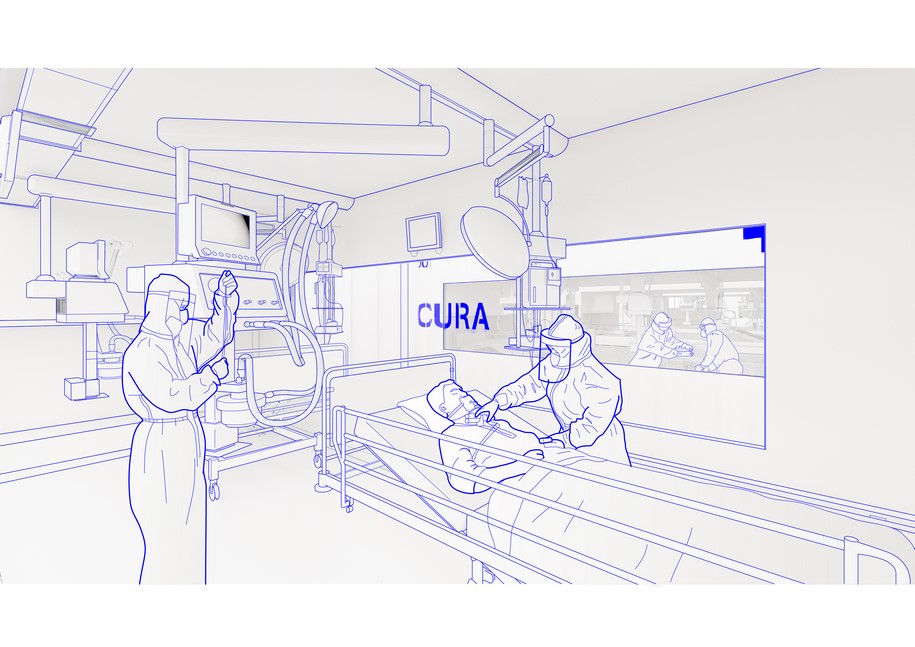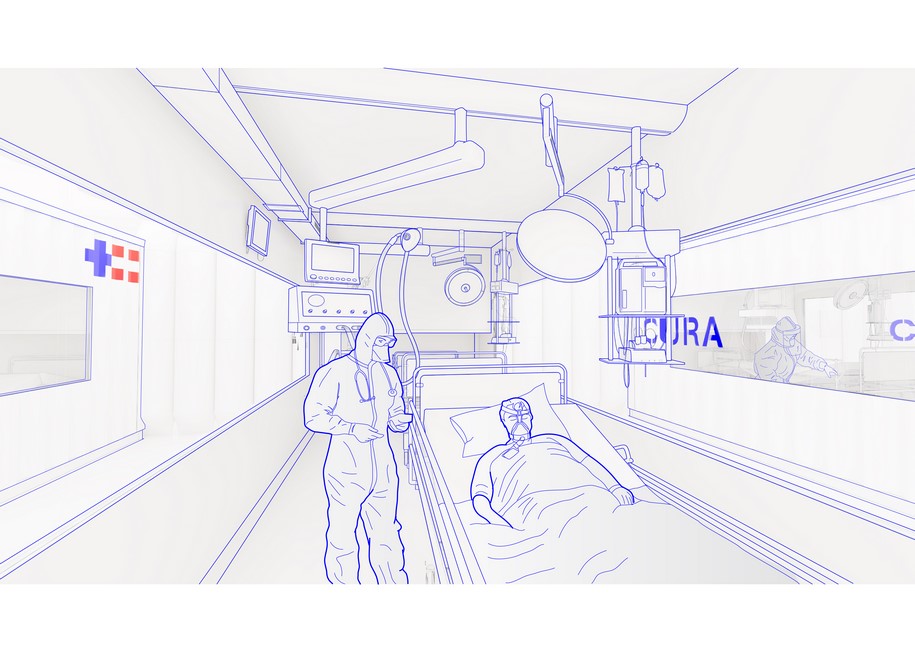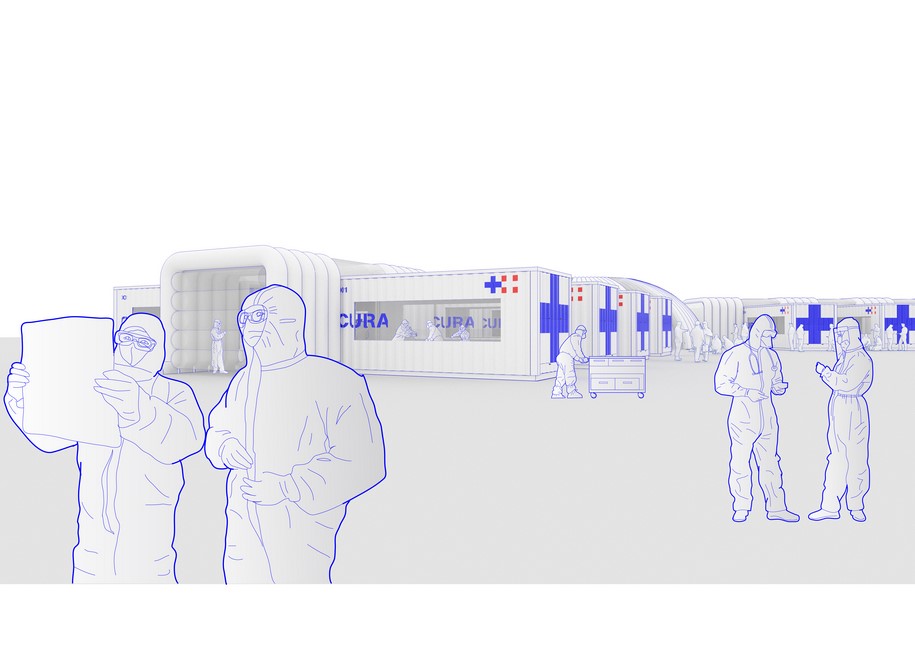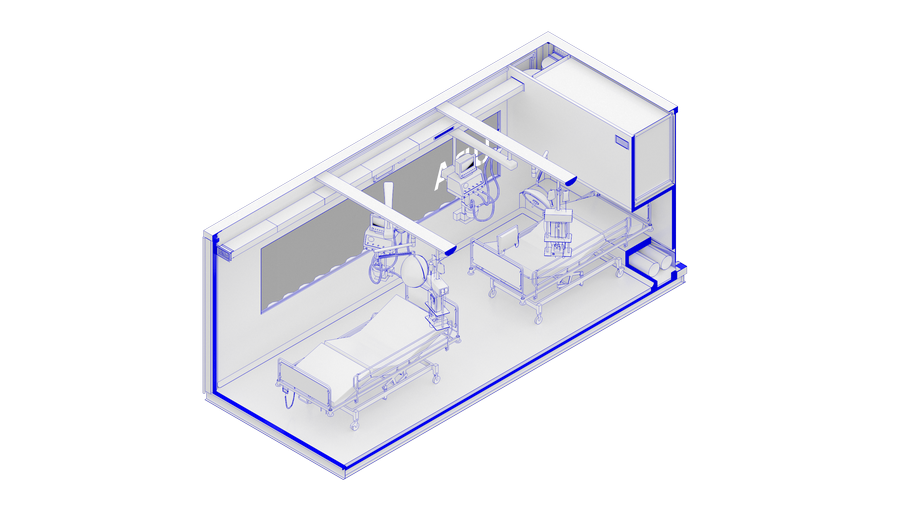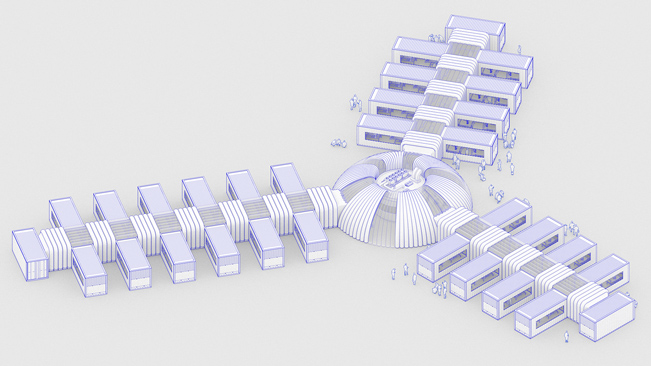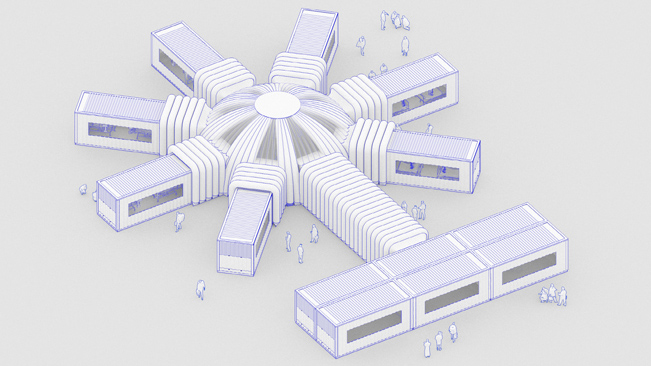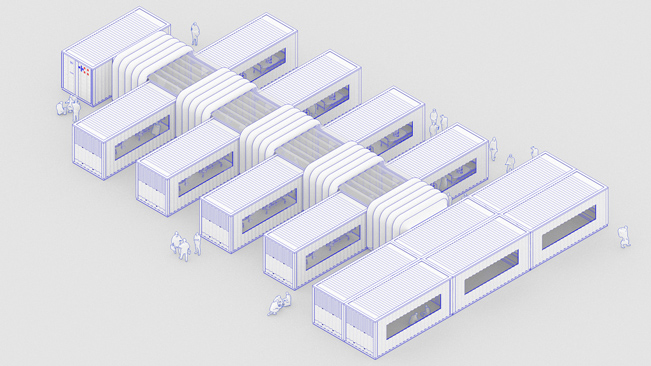Italian architects Carlo Ratti and Italo Rota have designed CURA (Connected Units for Respiratory Ailments), an intensive-care pod unit, to increase the country’s intensive care capacity for the COVID-19 pandemic. The units, with biocontainment with negative pressure, could be transferred everywhere in the wolrd quickly and be installed safely at various healthcare infrastructures, that are currently fighting the coronavirus pandemic.
-text by the authors
Amidst the COVID-19 pandemic, an international task force of designers, engineers, medical professionals, and military experts have joined forces to work on CURA, an open-source project aimed at capacity building in Intensive-Care Units (ICU). The first prototype of CURA, whose name stands for Connected Units for Respiratory Ailments (and also cure in Latin), is currently being built in Milan, Italy, with the sponsorship of European bank UniCredit. It uses repurposed shipping containers to create plug-in biocontainment pods that can be quickly deployed in cities around the world, promptly responding to the shortage of ICU space in hospitals and the spread of the disease.
CURA is a compact Intensive-Care pod for patients with respiratory infections, hosted in a 20-foot intermodal container with biocontainment (thanks to negative pressure). Each unit works autonomously and can be shipped anywhere. Individual pods are connected by an inflatable structure to create multiple modular configurations (from 4 beds to over 40), which can be deployed in just a few hours. Some pods can be placed in proximity to a hospital (e.g. in parking lots) to expand the ICU capacity, while others could be used to create self-standing field hospitals of varying sizes.
CURA aims to improve the efficiency of existing solutions in the design of field hospitals, tailoring them to the current pandemic.
In the last weeks, hospitals in the countries most affected by COVID-19, from China to Italy, Spain to the USA, have been struggling to increase their ICU capacity to admit a growing number of patients with severe respiratory diseases, in need of ventilators. Whatever the evolution of this pandemic, it is expected that more ICUs will be needed internationally in the next few months.
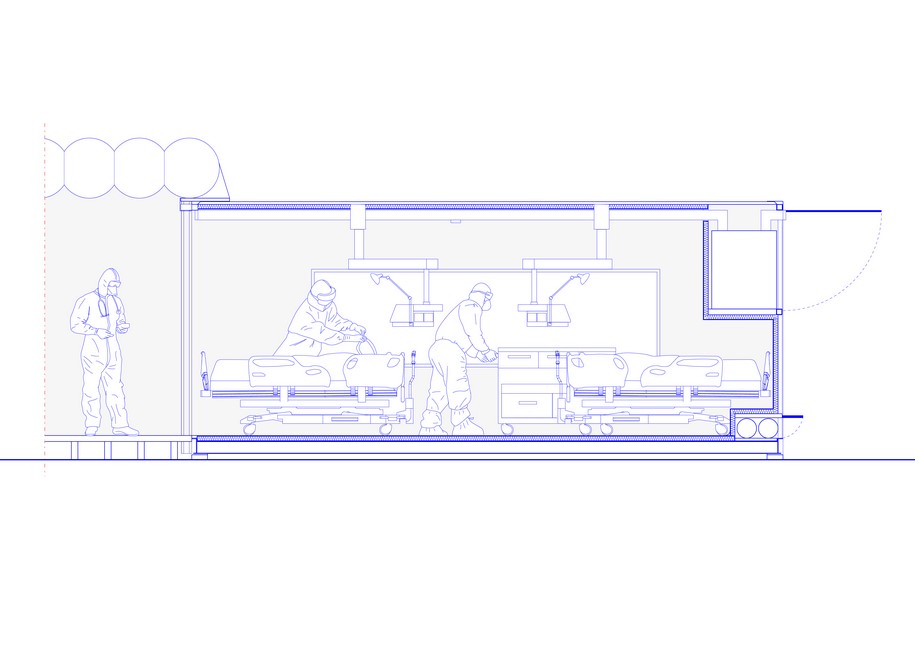
Each CURA pod would contain all the medical equipment needed for two COVID-19 intensive-care patients – including ventilators and intravenous fluids stands. All units can be connected by an inflatable corridor. The first CURA pod is being built for test at a hospital in Milan, Italy. CURA pods are being conceived as a ready-to-use solution.
Shipping containers can easily be moved through different modes of transport – from ship to rail to truck – and re-used in different parts of the world, adapting to the needs and capacity of the local healthcare infrastructure.
CURA is developed in an open-source, non-for-profit framework and solicits suggestions and improvements. The first prototype of CURA, to be developed in Milan, Italy, is sponsored by UniCredit.
With the support of the World Economic Forum: COVID-19 Action Platform, and Cities, Infrastructure and Urban Services Platform. CURA is an open-source project. More information is available on www.CURApods.org.
Facts & Credits
Architecture (Design and Innovation) CRA-Carlo Ratti Associati with Italo Rota
Medical Engineering Humanitas Research Hospital
Medical Consultancy Policlinico di Milano, Dr.Maurizio Lanfranco of Ospedale Cottoleng
Master Planning, design, construction and logistics support services Jacobs
Visual identity & graphic design Studio FM milano
Digital media Squint/Opera
Logistics Alex Neame of Team Rubicon UK
MEP engineering Ivan Pavanello of Projema
_______________________________________________
Pandemic Architecture is an International Ideas Competition curated by the Design Ambassador for ARCHISEARCH.gr
The jury consists of Tom Lindblom, Lifestyle Sector leader for Gensler’s Latin American region, Roberto Palomba, architect and designer based in Milan, Lydia Kallipoliti, assistant professor in Cooper Union, Ora Ito, the phenomenon designer in pop culture based in Paris, Marianthi Tatari, Senior Architect / Associate at UNStudio, Sophia Vyzoziti, architect, researcher and associate professor in Greece, Kyriakos Chatziparaskevas from Heatherwick Studio and Martha Tsigkari, Partner of the Applied Research + Development (ARD) group at Foster + Partners.
Find more here!
READ ALSO: Narrative as a compositional instrument: Inception’s exemplification | Research thesis by Ourania Kountourioti
